Migrating an e-commerce business from WooCommerce to Shopify Plus is like expanding from a local shop to a global franchise. Shopify Plus offers numerous features that support growing businesses. While migration might seem daunting, it is simplified and can be completed in just six steps. Follow this guide to ensure a complete website migration, avoiding any data loss or consider partnering with a reputable Shopify Development Services provider.
To fully understand why Shopify Plus is a superior choice for growing businesses, it’s important to compare it with the standard Shopify platform.
Also, check out our detailed blog on How to Migrate from Magento to Shopify Plus?
Reasons to Migrate from WooCommerce to Shopify Plus
Security:
Shopify Plus is certified as Level 1 PCI DSS compliant. The Payment Card Industry Data Security Standard (PCI DSS) is a standard security certification for organizations that handle credit and debit card information. This helps them maintain greater control over payment data.
Shopify Plus is PCI-compliant across all categories:
- Maintain a secure network
- Protect cardholder data
- Maintain a vulnerability management program
- Implement strong access control measures
- Regularly monitor and test networks
- Maintain an information security policy
User-friendly interface:
Shopify Plus is known for its easy-to-use interface. A Shopify Plus store can be created by a non-technical person using its drag-and-drop model and intuitive navigation. It requires minimal coding knowledge compared to WooCommerce. Additionally, its dashboard provides a clear overview of store performance, orders, and customer data, making it easy to track everything in one place.
Scalability:
Shopify Plus is designed to manage the growth of businesses effectively. As a hosted platform, it imposes no restrictions on scalability. In contrast, WooCommerce relies entirely on third-party hosting. If the hosting company lacks options for expansion, it can become a significant problem. This makes Shopify Plus a go-to option for businesses expecting rapid growth. Without proper scalability, a website and business can face serious operational issues.
Customer support:
Shopify Plus offers 24/7 customer support via phone, chat, and email. In addition, Shopify Plus assigns a dedicated project manager to each user. This allows users to get immediate support, even for simple issues. In contrast, WooCommerce primarily relies on a community forum for user support. It may not provide the same level of immediate or personalized assistance as Shopify Plus’s dedicated support team.
Apps and themes:
Shopify Plus allows merchants to access both paid and free themes that can be easily customized using simple drag-and-drop methods. It offers a vast library of apps in the Shopify App Store. In contrast, WooCommerce provides access to a mix of free and premium themes, but customizing a WooCommerce site often requires technical knowledge. Additionally, WooCommerce benefits from an extensive library of plugins, but managing these plugins can require technical expertise.
Also Read
6 Steps to Migrate WooCommerce to Shopify Plus
1. Export the Data from WooCommerce:
Use the built-in export functionality in WooCommerce to export the products, customers, orders, and other relevant data. If the amount of data is large, use the ‘All Export’ plugin to export the entire dataset.
Note: It is advisable to back up the entire WooCommerce store before starting the migration process.

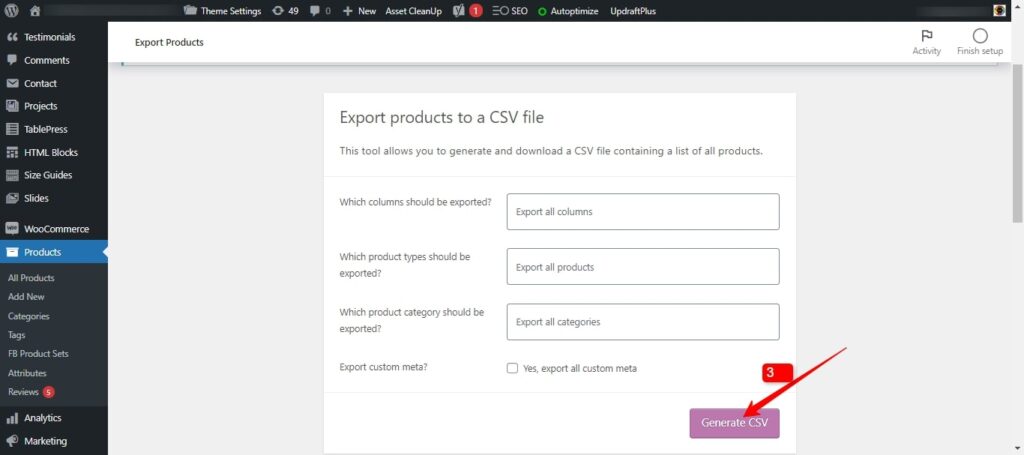
2. Customize the Shopify Plus Store:
Choose a theme from the Shopify Plus store and customize it to match the brand identity. Set up tax and install any additional apps in Shopify Plus. Shopify exclusively has the option to completely customize the checkout page based on the need.
Also Read
3. Migration Tool:
Shopify Plus offers two main options for migrating the WooCommerce store:
- Manual Migration: This involves exporting the data from WooCommerce (products, customers, orders, etc.) and then importing it into Shopify Plus using a CSV file manually. It works well if the number of items and products is less.
- Third-Party Migration App: Shopify Plus offers a selection of apps designed to streamline the website migration process. For very large datasets, consider data migration from an ERP system or a custom solution.
4. Import the Data into Shopify Plus:
If using a manual migration, import the prepared CSV file into Shopify Plus using the import tool within the admin panel. If using a third-party app, follow the specific app’s instructions for data import. Importing in a specific order (products, customers, orders, reviews) helps maintain a complete transaction history.
Note: It is very important to make sure that the CSV file used to migrate is formatted based on the template to map the data correctly.
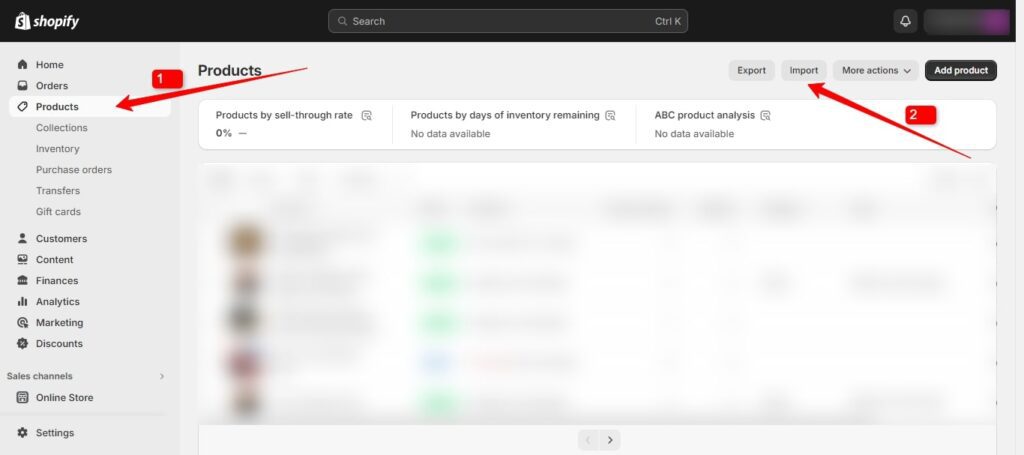

5. Verify and Organize the Imported Data:
After the import, thoroughly review the products, customers, orders, and other data to make sure everything has been imported correctly. Organize the products into categories and collections within Shopify Plus for a user-friendly storefront.
6. Test and Launch the New Shopify Plus Store:
Place test orders to ensure the checkout process and order function smoothly. Once everything is functioning properly, launch the new Shopify Plus store. It is recommended to redirect the traffic from the old WooCommerce site to Shopify Plus.
Did You Know?
WooCommerce market share is 20.1%, second behind Shopify, at 26.2% of all ecommerce sites.
Key Points To Keep In Mind Before Migration
- Data Integration: Ensure the data (products, customers, orders) is mapped and imported into Shopify Plus’s data structure.
- File Format: The format of the exported file from WooCommerce should match the importing format of Shopify Plus.
- Product Variants: Shopify Plus handles product variants differently than WooCommerce. Restructure the product data for variants.
- Order Statuses: Map the existing WooCommerce order statuses to Shopify Plus.
- Customer Accounts: Migrate customer accounts and ensure proper password management during the website migration process.
- SEO Impact: Migrating to a new platform can impact the SEO. Plan some strategies to minimize SEO disruption.
- Testing is Crucial: Thoroughly test the new Shopify Plus store before launch, including checkout, order fulfillment, and other functionalities.
Shopify Plus and WooCommerce Comparison
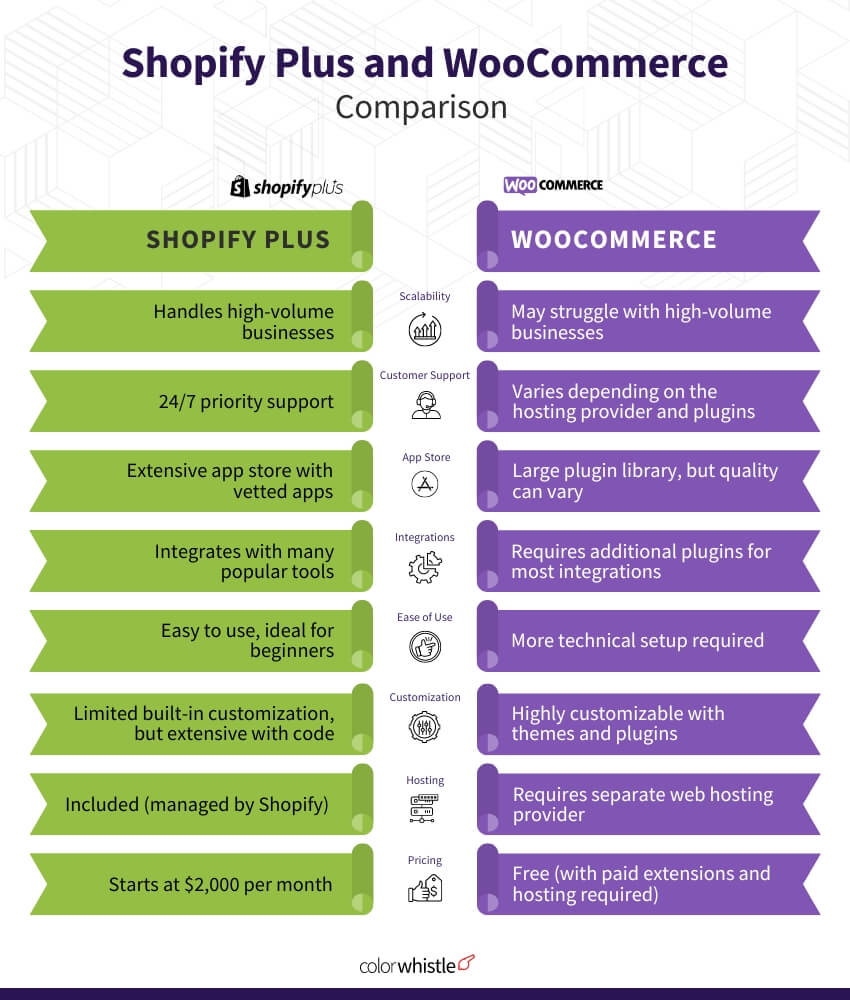
Wrap Up
Migrating from WooCommerce to Shopify Plus helps businesses expand. This process can be streamlined by following the six detailed steps provided. Shopify Plus not only offers a secure and user-friendly interface but also provides superior customer support and scalability options.
To ensure a successful migration journey, consider partnering with ColorWhistle. We have dedicated Shopify Plus developers who specialize in Shopify Development Services. We will assist with every step of the website migration process.
What’s Next?
Now that you’ve had the chance to explore our blog, it’s time to take the next step and see what opportunities await!

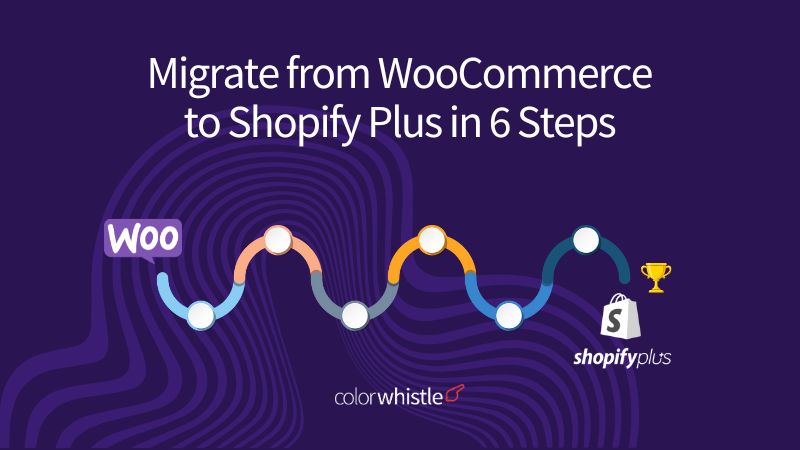


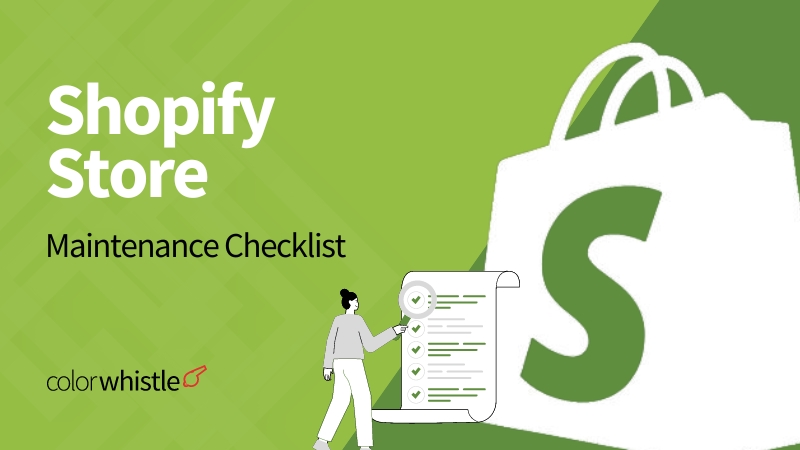

This blog is incredibly helpful for anyone feeling overwhelmed by the WooCommerce to Shopify Plus migration process. The six-step breakdown makes it feel less intimidating, especially with the insights on security, scalability, and customer support.